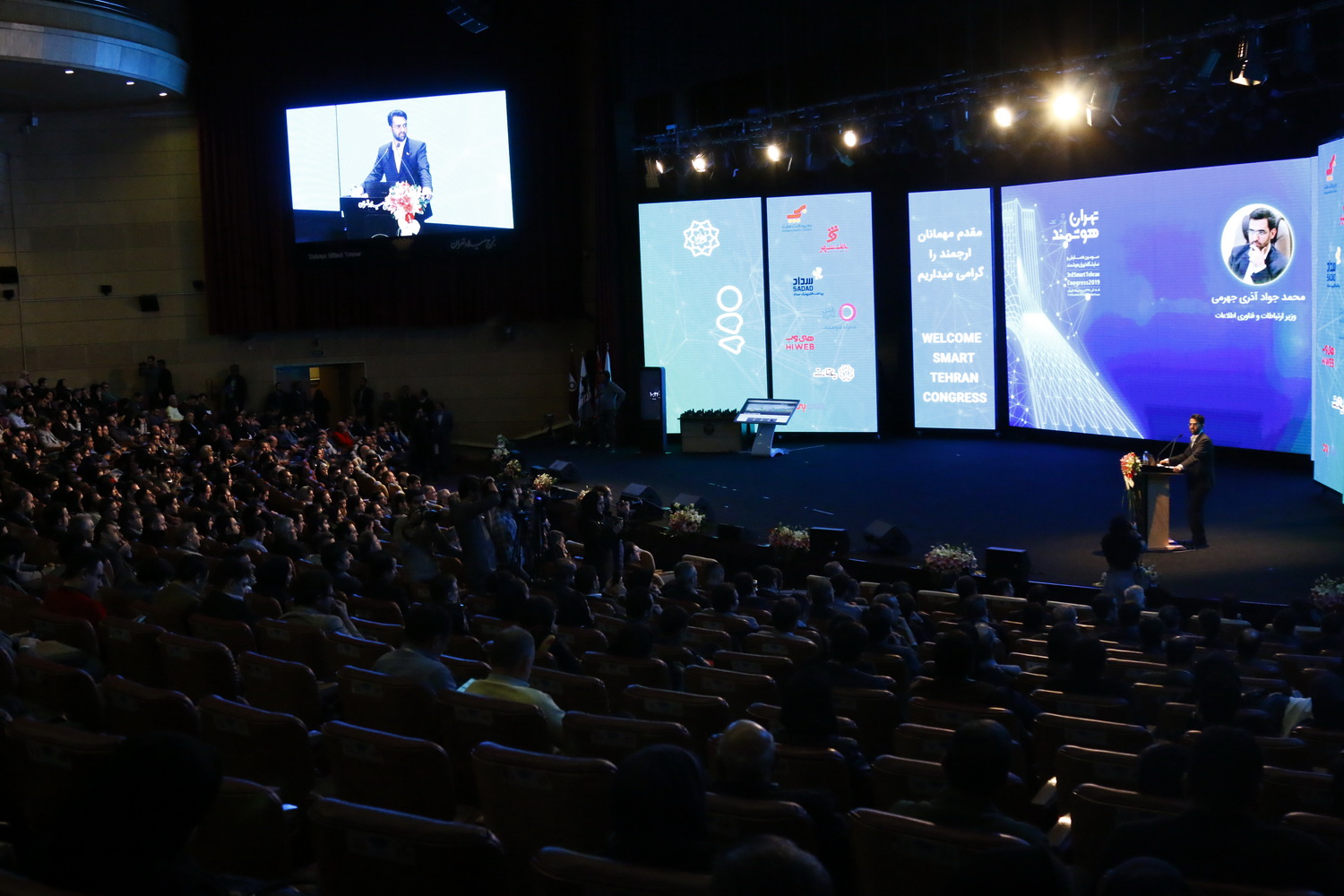On Monday, Tehran Municipality gathered urbanists, tech aficionados and communication policymakers for a two-day event dubbed Smart Tehran Confab that was certainly not smart, as what was spotlighted was neither innovative nor promising.
With close to a thousand people gathered at Milad Tower and nationalist music playing in the background, Tehran Mayor Pirouz Hanachi, ICT Minister Mohammad Javad Azari Jahromi and Tehran City Council Chairman Mohsen Hashemi Rafsanjani went on stage to unveil the Iranian capital’s latest projects to make it a smart city.
However, what they unveiled, in reality, was a few low-key schemes with little to no impact, including a website allowing people to buy subway tickets.
Jahromi appeared unaccompanied by senior ICT Ministry officials—who used to be treated like rock stars at tech gatherings over the past few years—and refused to take questions from reporters about the elephant in the room.
It was Jahromi’s first public appearance after the weeklong internet shutdown that went underway on Nov. 16, following widespread violent protests over the government’s unexpected decision to impose a threefold hike in fuel price. He did not mention the shutdown even once and spoke about his ministry’s efforts for transforming Iranian metropolises into smart cities.
Hashemi took the stage but stuck to generalities, sloganizing how smart solutions can help curb bureaucracy et al. He also called on the government to facilitate data-sharing projects between state agencies and public institutions.
The First Smart Tehran Congress was held in 2017 and during Mohammad Ali Najafi’s tenure as Tehran mayor. The previous two editions of the event offered more substance and less rhetoric. For instance, during the second round, an open API portal was launched by the city council.
Cyclist Mayor
During the event, numerous clips of Mayor Hanachi were played showing him riding a bike. After taking office in December, Hanachi joined the “Car-Free Tuesdays” initiative launched in 2016, which encourages people not to use private vehicles on Tuesdays.
Visibly fed up with the lack of action to curb air pollution, environmentalists in Arak, one of Iran’s eighth most polluted metropolises, started the campaign to help raise awareness about the role of people in reducing air pollution.
While Hanachi’s decision to join the campaign has been commended on more occasions than one, it has also attracted its fair share of criticism. For instance, former Tehran mayor, Gholamhossein Karbaschi, has called on him to spend more time addressing urban ills instead of cycling.
During the current event, a social media platform was unveiled to connect cyclists. By using the platform, people may comment on good roads for riding a bicycle and share experiences.
Hanachi’s participation in the campaign has attracted much attention, but it certainly cannot be considered an achievement for the municipality.
Observers have wondered how a social media platform for cyclists could transform Tehran into a smart city.
Spark of Hope
While the new schemes of government and municipality officials were a big disappointment, startups and tech enthusiasts tried to keep the spark of hope alive.
On the sidelines of the event, tech firms showcased their latest urban apps in an exhibition.
A hackathon was also held at the same venue where tech experts elaborated on smart solutions for curbing air pollution and making life more livable in overcrowded metropolises like Tehran.
A four-member team (Bita Kazeminejad, Sadjad Fallah, Pouria Rad and Amin Askari all under 32) won the hackathon’s prize. In a talk with Financial Tribune, Kazeminejad detailed their solution.
According to her, the service would allow citizens to pick the fastest, cleanest and cheapest way to travel to a destination.
“Most navigation services are focused on finding the shortest route,” she said.
However, the team’s product would compare travel time and cost of different modes of transportation, including online taxis, public transportation, walking and cycling along different routes.
It would also gather data from thousands of modular air pollution controllers to create a real-time map of pollutants’ density throughout the city. Using scientific methods, it would also predict how the factors would change over time.
“By using the information, our product would provide users with an array of options, helping them pick the best route,” Kazeminejad said.
While government officials and urban managers have failed to come up with a workable strategy for transforming Tehran into a smart city, hopefully, they will support the activities of younger generations committed to reclaiming Tehran’s streets and making the capital a more pleasing and inhabitable place.



